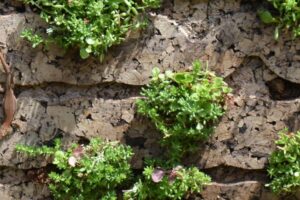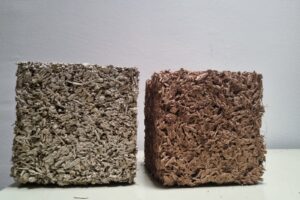
Cyan2Bio: Sustainable production of bioplastics and natural pigments from cyanobacteria in wastewater effluents
March 3, 2025
RENOVATE: Innovation, Digitalization, and Training for Agricultural Sustainability
March 25, 202518/03/2025
The project, led by the Paper Engineering Research Group (CELBIOTECH) at the Universitat Politècnica de Catalunya - BarcelonaTech (UPC), aims to obtain different subproducts from the waste generated during industrial hemp cultivation, also known as hemp fibre. The proposed processes are technologies already used in biorefineries and the paper industry but with different raw materials.
Industrial hemp cultivation has significantly increased in Catalonia in recent years. Approximately 50% of the crop is composed of straw or hemp fibre, which represents waste that makes its valorisation essential to reduce its wastage. The hemp fibre is made up of 50-60% cellulose, 20% hemicelluloses, and 20% lignin.
Currently, subproducts are obtained from various sources of lignocellulose (mainly composed of cellulose, hemicelluloses, and lignin). However, the potential of the hemp fibre in the entire biorefining and paper manufacturing process remains underexplored.
The innovation of the project lies in obtaining all these subproducts from industrial hemp waste, which is growing in Catalonia, and therefore, its wastage needs to be reduced.
RevCan aims to demonstrate the valorisation of hemp fibre, by extracting its different components through sustainable processes to create biodegradable subproducts with high added value, such as xylooligosaccharides (XOS), which have prebiotic and antioxidant properties, lignin, with antimicrobial and antioxidant applications, and nanocellulose, an innovative material with applications in the packaging and paper industries.
The subproducts developed in the project will help address the current climate emergency and advance the transition towards bioeconomy and circular economy. The expected benefits include:
-
- Sequential extraction of lignocellulose components within the current biorefinery concept.
- Obtaining emerging subproducts with applications in different sectors: food, paper, packaging, and wrapping.
- Reducing agricultural waste, particularly hemp fibre waste, and finding higher added-value applications.
- Contributing to mitigating climate change, bioeconomy, and circular economy.
Budget and Funding
The project has a total budget of €50,000, funded through the Rural Development Programme of Catalonia 2014-2022 by the Department of Climate Action, Food, and Rural Agenda (Government of Catalonia) and will be developed over 22 months (February 2024 - June 2026).

Action under the PAC 2023-2027 Strategic Plan co-funded by:

Topic
You want to know more?
Related Projects
- A research team from the inLab FIB at the Universitat Politècnica de Catalunya - BarcelonaTech (UPC), together with the Asociación de Personas con Movilidad Reducida (AsoPMR), has taken part in the Spot4Dis project to enhance the mobility and autonomy of people with reduced mobility.
- The La Volta project foresees the construction of a large Catalan vault pergola within the Llars Mundet campus, in the Montbau neighbourhood (Horta-Guinardó district). This structure will become a new architectural landmark for Barcelona, combining traditional construction techniques with contemporary innovation. The project involves the Rehabilitation and Architectural Restoration Research Group (REARQ), at the Universitat Politècnica de Catalunya - BarcelonaTech (UPC), and is led by the Architects’ Association of Catalonia (COAC) and the Barcelona Provincial Council.
SATE-VEG: A system for energy renovation of buildings that helps reduce the urban heat island effect
Researchers from the Architecture, Energy and Environment (AiEM) group at the Universitat Politècnica de Catalunya - BarcelonaTech (UPC) have developed SATE-VEG, an external thermal insulation system with a vegetal coating that offers seasonally adaptive thermal behaviour, enhances urban biodiversity and promotes positive health effects. The system is made from organic materials, requires low maintenance and consumes minimal water.- A research team from the Interdisciplinary Group on Building Science and Technology (GICITED) at the Universitat Politècnica de Catalunya – BarcelonaTech (UPC) is leading the BioSAFE project, which aims to develop sustainable building envelopes —mainly façades— designed according to sustainability, comfort and safety criteria, with particular attention to their acoustic behaviour and fire performance.




